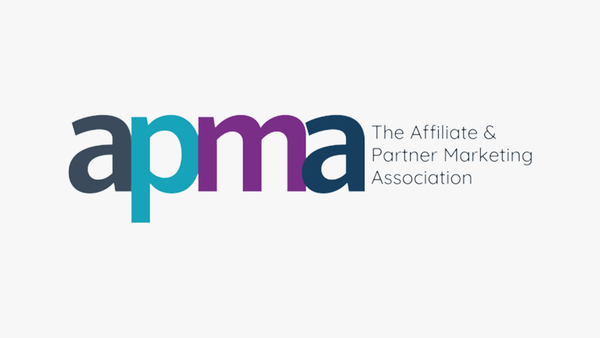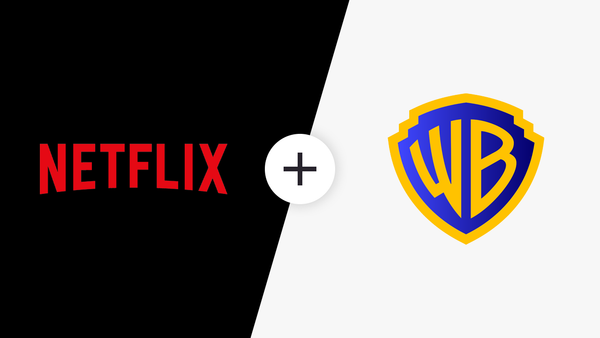Imagine that the new year ahead is a long, winding road. The destination: Digital Marketing Success. You’re slamming your foot down and surging on through the night – you can do this on your own with pure perseverance, or so you think.
But suddenly you’re lost, you can’t find the right track, you take the wrong turn, and now you’re heading in the complete opposite direction of Success, straight to Loser Town.
Suddenly, bright lights blind your view, and you feel yourself floating straight out of your vehicle. A spaceship has abducted you. On board this ship are Matthew Higgins, Managing Partner, Affiliates, e-commerce & Retail Media, at dentsu international, and Luke Stanford, Head of Retail Media at Zenith. They’ve arrived to tell you where you went wrong – that understanding retail media networks is the key to getting back on track to Success this year.
Pay close attention to these extraordinary experts, as their advice might save you a whole load of wasted mileage in the wrong direction.
What is retail media?
Put succinctly, Matthew tells us that retail media is “digital advertising that occurs on a retailer’s e-commerce website and apps” i.e. the digital version of in-store advertising. It’s marketing at the point of purchase. If you walk into a Boots store, you’re likely to see a poster hanging from the ceiling advertising a particular perfume or other product. I used to work at Boots and at that time they were advertising Ariana Grande’s new fragrance, and I still remember this. See how effective it is?
Retail media is the digital version of this. Products are advertised on an e-commerce site, near the point of purchase, incentivising the customer to buy. Matthew continues, “Numerous leading retailers offer advertising solutions on their e-commerce properties, most notably Amazon, but also Tesco, Sainsbury's, and Boots.”
In the next two years, Luke expects to see even more brick and mortar stores building a retail media offering, to capitalise on their existing customer bases and take a share of advertising budgets.
Why is there so much traction to the channel right now?
A report released in December showed that retail media is one of the fastest growing sectors within the digital advertising industry. 92% of advertisers and 74% of agencies are already partnering with retailers to reach consumers. Of the small groups not engaged with retail media as an advertising channel, 88% of advertisers and 77% of agencies state they plan to do so in the next 12 months. So, what is it about the channel that’s attracting marketers in droves?
Luke proposes three reasons:
- The channel is completely measurable. You can see the amount of sales and revenue you generate for your brand as a direct result of campaigns, which allows advertisers to quantify ROI directly from the activation.
- Users on retailer websites are already in a stage of high purchase intent, in comparison to other online browsing. Targeting users here allows advertisers to win the low hanging fruit, when users are most ready to purchase.
- A sense of FOMO across the advertising world. The brands that aren’t engaging with this channel will potentially be missing out on targeting users at their point of purchase, and over time this could lead to a decline in their total market share in comparison to competitors who are consistently advertising on this channel.
Matthew points to the 2020 Salesforce Connected Shopper Research, which revealed that only 18% of e-commerce revenue occurred on brands’ owned and operated platforms. In contrast, sales through marketplaces (e.g. Amazon and eBay) and online retailers accounted for a combined total of 73% of the revenue generated. “In that sense,” Matt concludes, “For many brands making the most out of advertising opportunities online, retail environments are a no-brainer.”
But there’s one aspect of retail media that’s arguably drawing in marketers more than anything else…
First-party data opportunities
Retailers are sat upon a huge goldmine of first-party data about their consumers, in particular regarding their purchasing habits. “Every Boots Advantage Card use, Nectar point earned, or Tesco Clubcard offer used is generating a data point that the retailer can monetise,” says Matthew. As the third-party cookie dies the slow death, having a first-party data strategy is essential for marketers hoping to weather the storm.
Currently, one of the leaders in this space is Tesco powered by Dunhumby. Unlocking the power of Clubcard data, it allows advertisers to create custom first-party data audiences for use in social or programmatic campaigns. Luke explains, “This data can be particularly powerful for advertisers as it is based purely on buying behaviour, so when plugged into media channels it can lead to strong performance across a range of KPIs.”
Two use cases for this that Luke proposes are:
- Using Clubcard data on people who have previously bought your product to update them via programmatic on a new product entering the range.
- Using Clubcard data on people who have previously bought your competitors products to target them on social with the goal of converting them to your brand.
Matthew also brings up the recently announced integration between Tesco and Meta, which allows FMCG brands to promote new product launches by building an audience with Tesco’s data (people who have bought similar products, competitor products etc.), and target this audience across Meta’s platforms. “Never before have FMCG brands had so much control over targeting the consumer, or such direct linkage between their ad spend and sales through their retail partners,” says Matthew.
How can advertisers engage with the channel?
According to Luke, the traditional route is for trading teams to work directly with retailers to negotiate and purchase on-site and off-site media. However, with the creation of marketplaces like Amazon, and retailer networks powered through Citrus Ads or Criteo technology, this has switched towards performance marketing teams. He adds that Amazon and other retailers are now building their own self-service advertising platforms, which allow agencies and brands to run on-site campaigns, utilising a range of ad placements to drive results using a CPC auction model. These platforms provide measurement, which enables advertisers to measure success across a range of different KPIs from awareness through to conversion, and these results can then be reported back to the wider business.
Moreover, Matthew advises that one of the easiest ways for advertisers to engage with the channel is by speaking to an agency with a strong retail media offering. Right now, there’s a lot of moving parts, and there are significant differences in ways of working with Amazon, ASDA, Boots, Tesco, Argos, and so on. In order to avoid wasting too much time and energy trying to navigate these relationships, working with knowledgeable agencies is a great route.
What can we expect in 2023?
“The short answer is rapid growth,” says Matthew, “We’ll see more marketplace and retailer offerings come into the market, more brands investing in the channel, and more agency offerings to help their clients navigate the channel. I am sure the IAB will also start to create industry standards for the channel which will only serve to accelerate technology development, measurement, reporting, etc.”
Luke provides three big predictions for the channel this year:
- More retailers coming online with a retail media offering. Superdrug marketplace launched at the end of last year, and it’s expected that more brick and mortar stores will launch in 2023 (Waitrose & John Lewis expected in Q1 23).
- More creative formats. Most retailers at the moment are focused on three primary areas; sponsored search placements on-site, display placements on-site and collaboration ads on social or programmatic channels based on their first-party. Both the sponsored search and display placement options are expected to see an increase this year, as well as an increase in the way that first-party data can integrate with other channels, such as online video or search.
- Finally, an increase in the blending of retail media alongside more traditional digital channels. This will come in the form of: more uses for first-party data, inclusion in cross channel attribution modelling, better optimisation of performance via third-party tools, and more use of retail media insights informing other channels.
Any challenges?
By now, you’re probably thinking, ‘This all sounds great, but what’s the catch? Is this really just a smooth sailing journey to Success, along roads paved with golden first-party data?’ Well, you’d be correct to feel skeptical, because there are some ‘potholes’ in this road to be aware of, so to speak.
First of all, Matthew points to fragmentation within the retail media ecosystem. He expands, “Trying to create a clear and consistent picture of performance across multiple retailers is challenging with different look back windows, and sales measurement rules within the different platforms. With more retailers entering the market this year, this complexity is only set to increase, which makes working with trusted specialists to help navigate this environment so critical to driving success in retail media in 2023 and beyond.”
And complexity won’t just arise from an increase in retailers in this field, the influx of new advertisers into the ecosystem brings its own problems too – namely increase in the average cost per click, as competition for placements becomes more fierce. Luke explains, “Over time this will lead to diminishing returns for established advertisers. So in order to maintain efficiencies, it is important for brands who are established to maintain first mover advantage in this space. This means being the first to test new placements, new uses of first-party data and new retailers as and when they become available.”
Back on the road
Luke and Matthew bid you farewell and you find yourself blinking, back on the road, as if nothing had ever happened. But their advice echoes clear in your mind, as you change lanes and get back on track.
Retail media is a valuable channel for digital marketers in 2023 because:
- It provides opportunities unheard of in other channels due to its wealth of first-party data. As we await the eventual disappearance of third-party cookies, this will be essential for building personalised campaigns.
- It’s effective in its targeting of customers at the point of purchase when they are more incentivised to buy.
- Its total measurability allows advertisers to quantify ROI directly from activation.
- The channel is set to grow even bigger in 2023 with more retailers and advertisers jumping on the bandwagon, so it will be crucial for market competition.








